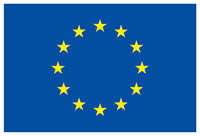Status of national policy, legislation and implementation tools and recommendations for the integration of the European GIS into transport infrastructure developmentTakeaways from the deliverable D5.1During these last months, BISON consortium went into a thorough survey regarding assessing and consequently enhancing the mainstreaming of Green and Grey infrastructure in EU member States. The survey had two major pillars:
Partial integration of biodiversity and green infrastructure into national legislation and policiesThe main results show that there is a delay in implementing the EU’s environmental requirements for transport infrastructure into national transport policies and strategies, as illustrated at the figure below Based on the BISON survey , the main reasons for this deals mainly with:
Need to move from legislation to implementationGreen infrastructure is not yet fully integrated into national policies and legislation; but gradually, and sometimes implicitly, these requirements are being incorporated into national laws and respective policies, and seem to be becoming more widespread in EU Member States and in other European countries (e.g. Switzerland). In Italy, initiatives such as the priority given (in some regions) to the reinforcement of existing infrastructure rather than to the construction of new roads or also relatively precise and detailed compensatory measures for road infrastructure are particularly interesting and encouraging. In order to better take into account the requirements of UE SGI, it would probably be necessary to agree on a broader definition of green infrastructure, integrating ecosystem services, and not only focusing on the biodiversity aspect. Finally, one of the main problems Member States are facing, is not the lack of EU environmental legislation and policy, but their proper implementation. MethodologyMore than 15 countries were represented by expert participation in 2 surveys regarding the implementation of the EU GIS into national policies, with the majority of respondents representing roads, railways and waterways, but including all modes of transport, while most participants were from transport administration organisations and environmental consultancies (with also representation from universities and research institutes, NGOs and associations, public agencies, private design departments). The following figure depicts the countries that participated at our survey. Figure 2: Representation of EU countries in the experts consultation within Deliverable 5.1 Additionally, an analysis of the national legislation systems was also carried out, through the completion of a comparative questionnaire which consists of 3 main sections:
For this comparative law study, 7 countries were studied: Belgium, Bulgaria, France, Germany, Italy, Spain and Sweden. This selection allowed for a broad overview, with countries having different state and economic structures. Next step: recommendations for policy/strategy harmonisationVarious alternatives could be explored to improve the alignment of policy/strategy and implementation of maturity with EU SGI and to ensure ecological connectivity in infrastructure development and maintenance. This work will be the focus of the next report (D5.2: Recommendations for policy/strategy harmonisation). It will be developed taking into consideration the results of the work done so far, while a dedicated expert consultation will also take place to enrich the existing results and provide valuable input to conclude specific recommendations towards relevant policy harmonisation. Important contributions will also be made from the outcomes of other BISON project working groups, mainly related to replicability and application of good practice to integrate biodiversity and transport. This report will also feed into the BISON Strategic Research and Deployment Agenda. |
|||||
|
BISON POLICY BRIEFS
As part of the BISON project, four policy briefs have been drawn up with the aim of proposing actions at European,...




 This project has received funding from the European Union’s Horizon 2020 research and innovation programme under grant agreement
This project has received funding from the European Union’s Horizon 2020 research and innovation programme under grant agreement 